This article was co-authored by Brendon Rearick. Brendon Rearick is a Personal Trainer, Strength Coach, Fitness Program Director, and co-founder of Certified Functional Strength Coach (CSFC), a fitness education company in the San Francisco Bay Area. With 17 years of experience in the fitness industry, Brendon specializes in strength and conditioning, and his company CSFC has certified over 3,000 trainers in over 20 countries. Brendon has worked as a Program Director for Mike Boyle Strength and Conditioning (MBSC) and earned his massage therapy license from the Cortiva Institute-Boston. Brendon holds a BS in Kinesiology from the University of Massachusetts Amherst.
This article has been viewed 61,719 times.
The Cadet Challenge is the physical fitness test facilitated by the United States Junior Reserve Officer Training Corps for high school aged people. It provides an introduction to the necessary behavior required to achieve specific goals regarding your physical fitness. Prepare for the challenge by following specific steps that will allow you to improve your score, discover the benefits of exercise and discipline, and excel while competing in the JROTC Cadet Challenge.
Steps
Training for Every Component of the Cadet Challenge
-
1Work out for about 30 minutes at least three times a week. Consistency in your workout regimen is vital. At minimum, make sure you’re practicing the specific skills needed to pass the challenge three times a week. These should be done in addition to other weekly workouts. In roughly half an hour, you can warm up, work at a competitive pace, and cool down.
- Include aerobic and anaerobic exercises in your workouts, as well as muscle strengthening exercise and stretching.
-
2Warm up for a workout for 5 to 7 minutes. Spend a few minutes stretching your muscles and joints to prepare for a safe and productive workout. Immediately preceding whatever specific exercise you’re about to perform, go through the motions at a moderate pace. See this articles section of stretching for specific stretches you can incorporate into your work out.Advertisement
-
3Condition for 20 full minutes. Aerobic, anaerobic, and strengthening exercises should be completed during this period. These will help prepare you for the endurance, speed, and strength-related components of the challenge. Be sure to take specific steps to improve your ability to excel in each exercise of the challenge.
-
4Train for the one mile run. The first event of the Cadet Challenge is the one mile run. To prepare for this event, find a track – which are almost always ¼ mile around – or consult a map to establish a running route that is precisely one mile long. Always time yourself, and try to beat your own time from the previous run.
- If you have to walk for part of the mile, don’t be discouraged. Minimize the amount of walking by taking short walking breaks only when absolutely necessary.
- Don’t worry too much about hills, as the test will be conducted on a flat surface. However, training on hills may get you better prepared by making flat runs relatively easy.
-
5Build leg strength for the shuttle run. The second event of the Cadet Challenge is a 30ft shuttle run. You will be required to sprint 30 feet from a starting position, pick up a block from the ground, sprint back to the starting location, and set the block down. You’ll then repeat this process, and conclude the test upon returning to the starting location for the second time as quickly as possible.
- Practice the shuttle run by measuring out a 30ft distance or going somewhere that already has two parallel lines 30 feet (9.1 m) apart. For example, a regulation volleyball court is 30ft wide.
- Don’t forget to time yourself every time and try to beat your personal best time each run.
-
6Practice doing pull ups. The third criteria by which you will be tested during the Cadet Challenge is simply the number of pull ups you can perform. To practice doing pull ups properly, start from a hanging “dead weight” position. Use a secure, straight bar 1 to 1.5 inches in diameter that you can easily and safely grip, and that is far enough from the ground that your feet are not touching. Pull yourself up until your chin clears the bar.
- Use either overhand or underhand grip – put your palms on whichever side of the bar you prefer.
- After each pull up, lower yourself to a fully hanging position, with your arms almost all the way straight. Do not go so far that you hang loosely, or as far as would allow your elbows to lock out.
- Avoid jerking or swinging your body during movement, and do not kick or bend your legs up to assist you.
-
7Work up to pull ups by practicing flexed-arm hangs. If you are unable to do any pull ups, build strength by hanging from a bar with your palms towards your face and your chin above the bar. Use a ladder or step stool to reach a bar, and grasp it shoulder width apart. Have someone remove the ladder or kick it away. Try to hold your chin above the bar for as long as possible.
- Don’t allow your legs to swing around, rest your chin on the bar, or tilt your head backwards to raise your chin.
-
8Practice doing as many sit ups as you can in 60 seconds. Referred to by the JROTC program as “curl ups”, the fourth exercise included in the Cadet Challenge tests the strength of your whole body, particularly your abdomen. Start by lying on your back and raising your knees while dragging the soles of your feet towards you. Position your feet about 12 inches (30.5 cm) from your bottom, with your soles flat on the ground.
- If you go not have an exercise partner to hold your feet down, tuck your toes under something immobile, such as the bottom of a slide on the playground.
- Cross your arms across your chest so that your hands are touching the opposite shoulder throughout the exercise. Keep your elbows against your chest.
- Pull your upper torso upwards until your elbows touch your knees or thighs.
- Lower your torso all the way down, so that your shoulder blades touch the ground.
- Repeat this bend as many times as you can in one minute to mimic testing conditions.
- Do not bounce off of the floor, as this is dangerous and will not be allowed during the challenge.
-
9Increase your ability to execute curl ups by practicing partial curl ups. If unable to do full curl ups, partial curl ups can help you get there. Lie down with your knees bent, and flat feet positioned about 12 inches (30.5 cm) from your bottom. For partial curl ups, do not secure your feet. Extend your arms forward and rest your hands on your thighs. Do a partial curl up by leaning forward and sliding your hands up your thighs as far as you can reach. Repeat the process as many times as you can muster.
-
10Incorporate the V-sit reach into your cool down. The final component of the Cadet Challenge measures your flexibility via a V-sit reach exercise. Following a full-pace work out, keep your muscles working at a more mellow pace for 4 to 6 minutes. Wind down slowly, and then stretch your muscles again. Make sure to practice the V-sit reach in particular.
- Remove your shoes for the V-sit reach.
- Sit with your legs outstretched in front of you, with your feet 8 to 12 inches (20.3 to 30.5 cm) apart.
- Align your heels along a baseline, such as the edge of the carpet or mat, and position a yardstick extending from the baseline.
- Clasp your thumbs together with your palms facing downward.
- With your legs flat, lean forward, reaching beyond the soles of your feet as far as you can.
- During the actual challenge, you’ll get three “practice” reaches; your fourth reach will record your score according to the distance of your reach.
Stretching to Condition Muscles and Prevent Injury
-
1Stretch carefully before and after every workout. After you’ve warmed up and your muscles are feeling limber and engaged, stretch to help prevent injuries. Avoid stretching before you’ve warmed up, as it is not only ineffective, but potentially harmful.
- Never rush a stretch. Schedule and use a full few minutes to stretch out the muscle groups you’ll be working out.
- Avoid “bouncing” while stretching. Allowing yourself to bounce in and out of a stretch can tear muscle fibers detrimentally.
-
2Stretch out the side of your body. Stand with your feet apart and your knees bent. Put one hand on your hip, and extend your other hand all the way overhead, reaching as far across as you are able. Hold this stretch for 15 seconds, and then repeat it on the other side.
- Do five repetitions of this stretch on each side.
- If you cannot hold the stretch for 15 seconds for 5 reps, start slowly with 2 or 3 reps on each side.
-
3Do a hand grasp stretch. To stretch a bunch of your muscles at once, clasp your hands behind your back and keep them clasped. Standing with your feet shoulder width apart and your knees bent, lean forward from the waist. Lift your arms backwards and upwards towards your head.
- Hold the stretch for 15 seconds. Do five repetitions, or as many as you are able.
-
4Get your lower back limbered up. Extend your legs straight out while lying on your back. Bring one knee all the way up to your chest. Pull the leg closer to your chest with your hands on your hamstring just above the back of the knee. Once you’re leg is pulled up, roll your shoulders slowly forward towards your knee.
- Do five repetitions of this stretch for each leg.
- If you cannot hold the stretch for 15 seconds for 5 reps on each leg, start with 2 or 3 reps on each side.
-
5Stretch your calves. Stand with one of your legs in front of the other and your hands on your hips. Lean your upper body forward, bending your front knee and putting your weight on your forward foot. Extend the rear leg straight back. Keep you back toe on the ground; your heel will naturally rise off the ground. To stretch the calve of the back leg, push that foot’s heel to the ground and hold for 15 seconds.
- Do five repetitions of this stretch for each calve.
- If you cannot hold the stretch for 15 seconds for 5 reps on both calves, start with 2 or 3 reps on each side.
-
6Keep your hamstrings stretched out. Sit on the floor with your back straight and your legs outstretched in front of you, toes upward. Pull one foot in towards your groin, tucking the sole of your foot against the inside of your other thigh. Bend at your waist over the outstretched leg, sliding your hands down your leg until you’re feeling the stretch.
- Hold the stretch for 15 seconds and do it twice for each leg.
Familiarizing Yourself with the Parameters of the JROTC Cadet Challenge
-
1Recognize the goals of the challenge. The preparation required to achieve success on the Cadet Challenge is meant to familiarize you with the process of maintaining a physical fitness regimen. The specific components of the challenge are selected to reflect your development of strength, cardio-vascular endurance, flexibility, agility, and speed. Success on the challenge indicates your ability to maintain a healthy physical condition – a necessary component of personal growth and healthy adulthood.
-
2Understand the scoring rubric for the Cadet Challenge. While your particular organization may require you to achieve certain marks for advancement or other achievements, national JROTC awards are determined on a percentile basis. The Cadet Challenge follows the benchmarks to earn The Presidential Physical Fitness Award. To earn this award, you’ll need to score in the 85th percentile or above on all five exercises included in the challenge. The National Physical Fitness Award is earned by scoring in the top 50 percent of each category.
-
3Focus on improvement at first. When you first begin training for the Cadet Challenge, do not worry about your initial scores. Monitor your times, etc., in order to set goals for improvement and recognize personal achievements as you approach them.
- Record your progress. Records your scores for each exercise each time your practice.
- Set specific goals to achieve for each exercise. Use the expected 85th percentile marks as especially significant goals to shoot for, though these don’t need to be your initial goals.
- Get more detailed explanations of each exercise from a JROTC-affiliated publication, many of which are available online. Furthermore, electronic and printable forms are available online to help you keep track of your training regimen and progress towards your goals.
-
4Shoot for competitive mile and shuttle run times. For the shuttle run, boys of 16-17 years of age will likely need to complete a shuttle run in 8.7 seconds to match the 85th percentile, and the mile in about 6 minutes and 6 seconds. Girls of the same age will need to complete the shuttle run in about 10 seconds, and the mile in under 8 minutes and 20 seconds.
- For the shuttle run, you will be allowed to run twice, with the better of your two scores being used as your official score.
-
5Know the necessary number of curl ups and pull ups you’ll need to complete. 17 year old boys will need to complete around 55 curl ups in 60 seconds to score in the 85th percentile, while girls of the same age will need to complete around 44. 17 year old boys will likely need to be able to complete 13 pull ups to score in the 85th percentile. 17 year old girls will likely achieve this percentile with 1 pull up.
-
6Work to improve your flexibility. This can be an especially challenging exercise, so don’t overlook stretching. 17 year old boys who score in the 85th percentile of the V-sit reach usually attain a score of 7 inches. Girls of the same age and percentile usually reach 8 inches.
Community Q&A
-
QuestionIs the JROTC flexed arm hang for females supposed to be palms facing out away from the participant or palms in facing the participant?
 Community AnswerAs a current cadet I can say that it depends on the program and instructor. Within my own program we are given the choice based on what works for us. I find most people do it with palms facing themselves.
Community AnswerAs a current cadet I can say that it depends on the program and instructor. Within my own program we are given the choice based on what works for us. I find most people do it with palms facing themselves. -
QuestionAs a current cadet I really want to improve my cadet challenge scores. How can I improve to join the military?
 Tristen EltonCommunity AnswerWork out each day on the areas you struggle on. Put 1 day a piece towards each challenge and make it more difficult each time you do it. By the time of your test you should perform well. However this plan takes a lot of discipline and you have to stick to it.
Tristen EltonCommunity AnswerWork out each day on the areas you struggle on. Put 1 day a piece towards each challenge and make it more difficult each time you do it. By the time of your test you should perform well. However this plan takes a lot of discipline and you have to stick to it.
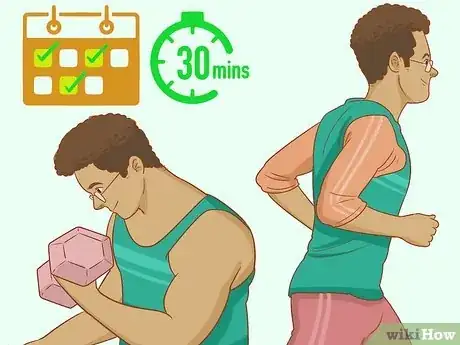
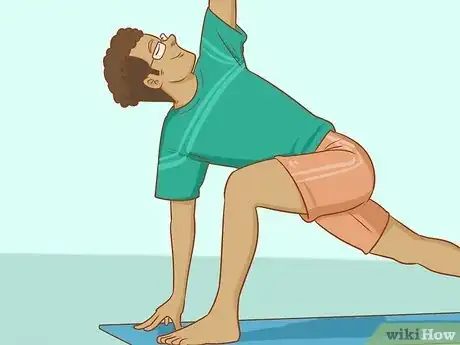
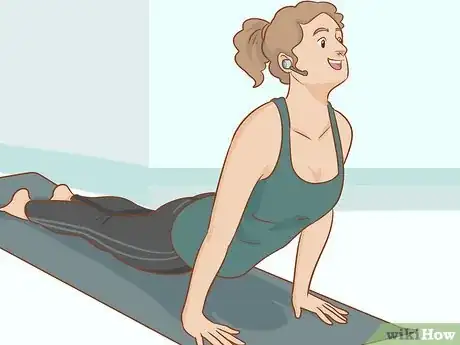

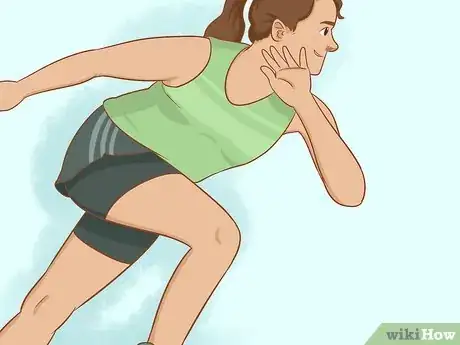
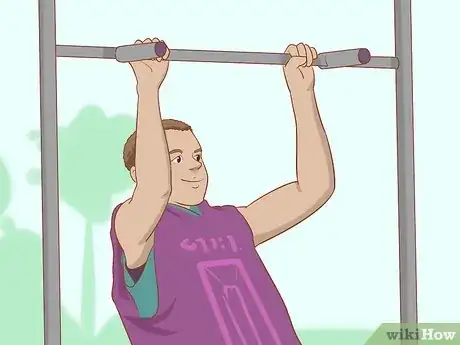
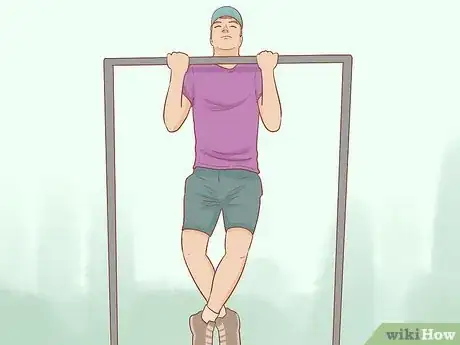
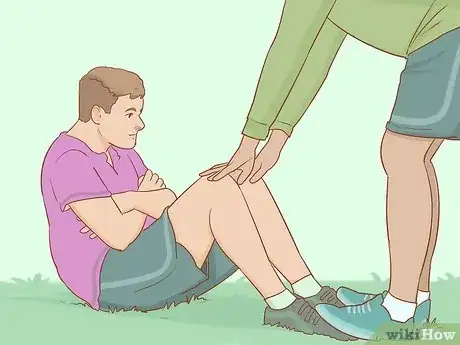
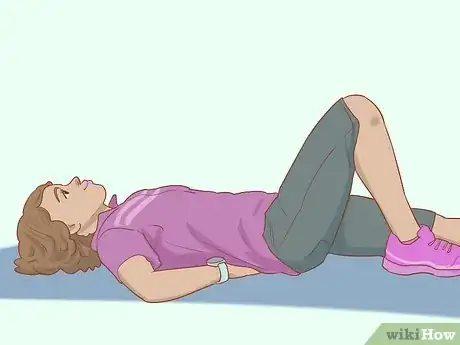
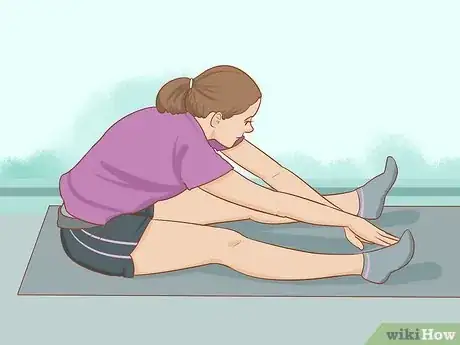
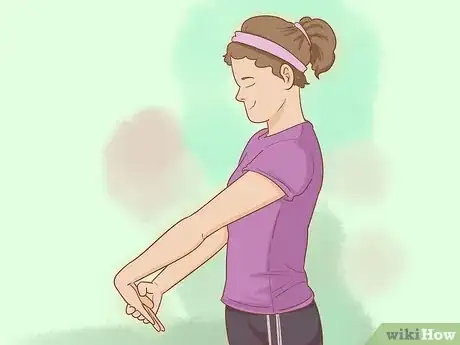
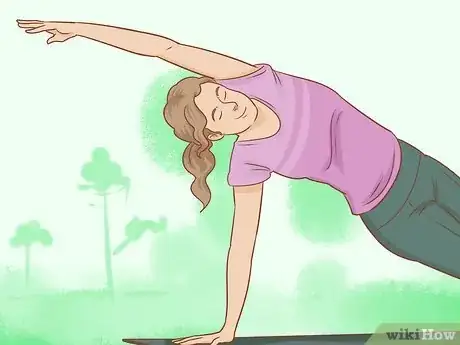



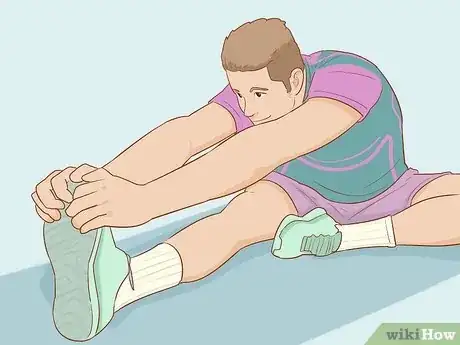
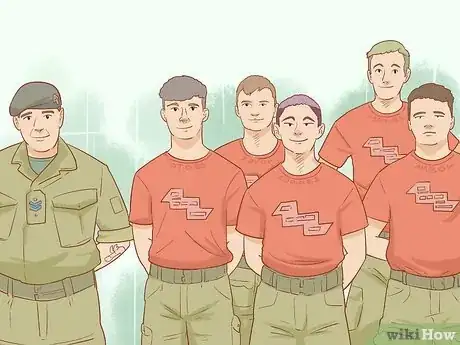

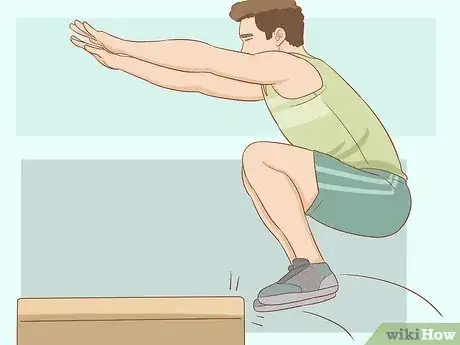
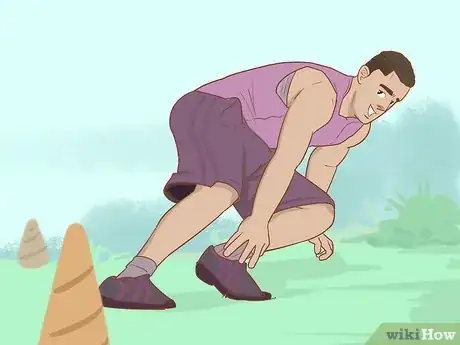

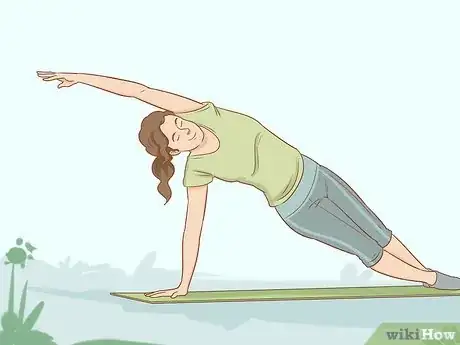

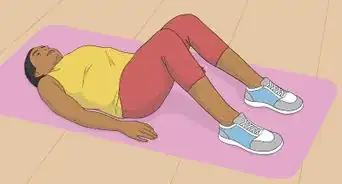





-Step-10-Version-3.webp)




















































